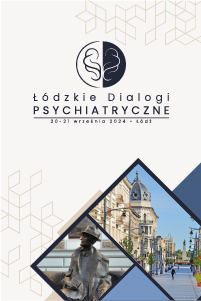Temperamental components of impulsivity in ADHD
Małgorzata Lipowska, Dorota Dykalska-Bieck
 Affiliacja i adres do korespondencji
Affiliacja i adres do korespondencjiThe aim of the above research was to identify the temperamental profile differentiating children with diagnosed ADHD from their friends who are not affected by developmental deficiency. Moreover, the objective was to examine whether the temperamental profile of hyperactive children can be characterized by the same specific configuration of traits. Material and method: The experimental group comprised 63 children with diagnosed ADHD (32 girls and 31 boys). The control group consisted of children without any diagnosed developmental deficiency (37 girls and 30 boys) in the age adequate to the research group (control group aged M=11.5; SD=0.9; ADHD children aged M=11.6; SD=0.4). Temperamental profile was evaluated by means of Buss and Plomin EAS-C Temperament Questionnaire, Polish version adapted by Oniszczenko (1997) and evaluated by parents and teachers. The severity of symptoms criterial for ADHD was described with the use of Wolańczyk and Kołakowski Questionnaire for diagnosing ADHD and behavioural disorders (2005). Results: Correlates were found between the severity of ADHD symptoms and the child’s specific temperamental profile. In case of hyperactive children, teachers ranked shyness significantly higher (t=-5.2; p=0.000), whereas parents ranked emotionality higher (t=5.1; p=0.000). In both examined groups the activity level was estimated as average and high (6-7 sten). It appeared that the trait differentiating the temperamental profile of children from both groups was emotionality – a higher level of this trait was indicated both by parents (t=8.6; p=0.000) and teachers (t=6.4; p=0.000). As far as the relation between particular temperamental traits and criterial ADHD dimensions is concerned, a correlation was found between emotionality and impulsivity (r=3.4; p=0.008) and hyperactivity (r=3.5; p=0.007) in parents’ evaluation and impulsivity (r=3.6; p=0.004) in teachers’ perception. Moreover, the teachers also emphasised the correlation between sociability and inattention (r=4.3; p=0.001). Conclusions: There is a correlation between the severity of hyperactivity symptoms and the configuration of temperamental features in children. Hyperactive children exhibit a specific temperamental profile.















